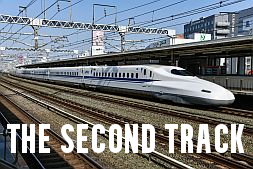Feeding the world, all seven billion
In a world where more than one billion people are overweight and 800 million are undernourished it’s easy to see why global food security is a complex issue. Noby Leong looks at the challenge of feeding a hungry world.
It’s been said that wars of the future will be fought over not oil or terror, but food and water. The world is facing a burgeoning population, estimated by some to grow to 9 billion by the year 2050. Providing enough food for everyone is one of the greatest challenges the global community faces and it does not come without immense obstacles.
The issue of food security was reaffirmed following the World Food Summit in 1996. The summit sought renewed international cooperation to ensure that all humans enjoy healthy and balanced diets. Meeting this goal though is becoming increasingly difficult as the human population swells, creating added pressures. Urban sprawl continues to reduce the amount of viable land available for agriculture, fresh water resources are running out, global fish stocks are down and the prosperity of countries such as China and India have increased the demand for meat. But with 800 million people currently experiencing chronic undernourishment, is it even possible to feed and maintain our current population, let alone prepare for 9 billion?
Several solutions have been proposed to address concerns over food security. Intensifying agricultural productivity is one of them. There are concerns though that many modern farms have reached the limit of crop yields and the cost of fertilisers is a prohibitive barrier to expansion. Even in developing nations such as China and India, many farms rely on over-used aquifers to maintain crops year round, a resource that is quickly dwindling. Other measures have been suggested to address food security such as city farming, developing rural areas, economic incentives for farmers and commercial synthetic meat production, all with their own pros and cons.
Any solution proposed must also be sustained against the backdrop of climate change. The variability of seasons and freak natural disasters are capable of eliminating crops instantly, with grave social and economic consequences. Russia experienced a severe drought and heat-wave in 2006, where 40% of their grain crops were destroyed. Food prices increased, many farmers were on the precipice of bankruptcy and grain export bans were enforced. In our own backyards, we only need to look at the effect that Cyclone Larry had on the price of bananas. There is also the need to balance food productivity with the minimisation of environmental degradation and greenhouse gas production. It’s not really sensible to solve one problem by exacerbating another.
Addressing food production though is just one side of the food security debate. Another camp of thinkers questions whether it’s even necessary to address food production when food distribution is the clear issue. In Australia and many developed nations, one third to one half of all food is thrown away (a number that is surprisingly similar to that found in developing nations). This is enough to feed the 800 million people already malnourished as well as an additional 2.2 billion. When we consider these numbers, it seems a bit of a joke that we are so concerned with food security without addressing our own hypocrisy. Furthermore, when we consider that 1 billion people around the world are overweight, it appears even more ridiculous that we even have an issue with starvation.
It seems rather a bleak outlook when we consider the challenges needed to solve world hunger and continually feed a hungry population. It is clear that all of us, not just Governments, need to rethink how we eat, what we eat and where our food comes from. Otherwise, we’ll all be eating ourselves into starvation.
Noby Leong is your friendly neighbourhood scientists. He is a PhD candidate in Chemistry at the University of Adelaide and has an unhealthy obsession with food. He has previously worked as an advisor to the Minister for Youth of South Australia and is a fiction writer on the side. He is also co-founder and editor of the blog The Other Side of Science, which he encourages you to read from time to time.







